Schoolchildren suffer from the trauma of war
Always afraid that bad things will happen again
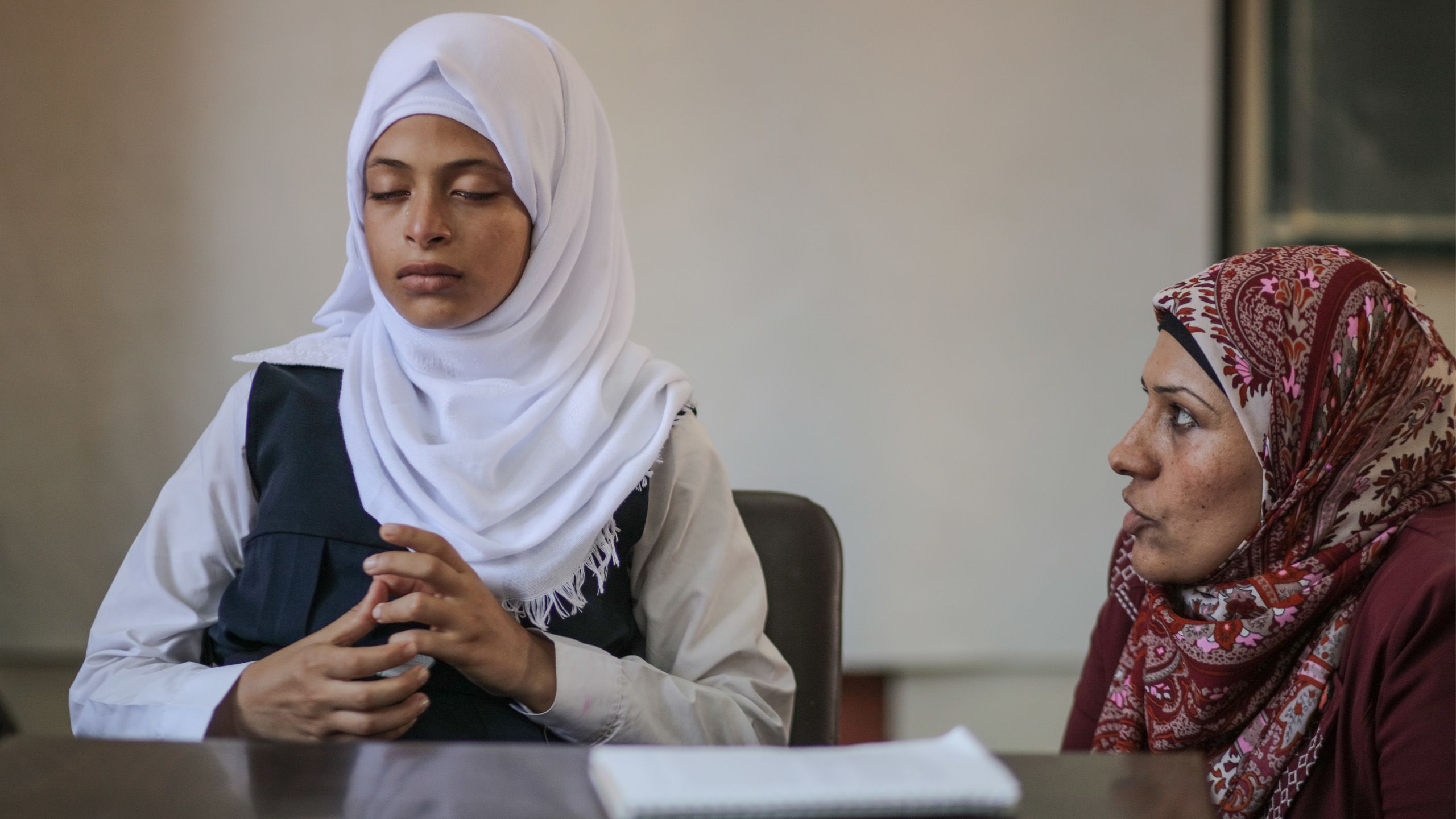

Children who experience violence, murder, war and conflict often struggle with high levels of anxiety and stress. Many have post-traumatic nightmares, have trouble sleeping and can’t concentrate in school. The worst thing is that they keep everything to themselves.
“It becomes a vicious circle,” says Jon-Håkon Schultz, Professor of Educational Psychology at UiT The Arctic University of Norway.
What is it like to be a school child during war? In Gaza? In Syria? In Afghanistan? And what about Yemen?
What is it like to see or hear that people in your neighbourhood, or at your school, are being injured or killed?
What does it do to you?
“You can compare it to anxiety in a bubble. If you don’t puncture that bubble, the post-traumatic nightmares live their own lives and steal your energy,” says Schultz.
To help children struggling with stress and trauma, Schultz and the Norwegian Refugee Council (NRC) have developed the Better Learning Programme (BLP) – a psychosocial programme for schools. The object is for the children to find their way back to the energy they need to be able to retain what they learn at school.
“You can compare it to anxiety in a bubble. If you don’t puncture that bubble, the post-traumatic nightmares live their own lives and steal your energy.”
Schultz has been on many trips to Gaza and other parts of the Middle East in connection with his work. He believes the Better Learning Programme and NRC’s school building initiatives give cause for hope.
“By giving displaced people structure in life, you build something that helps them survive. But without structure, they become vulnerable – much, much more vulnerable. When your family is crumbling and you can’t function at school, you have nothing. Structure is what makes the big difference.”
Education changes lives. You can be a part of that change by becoming a monthly donor.
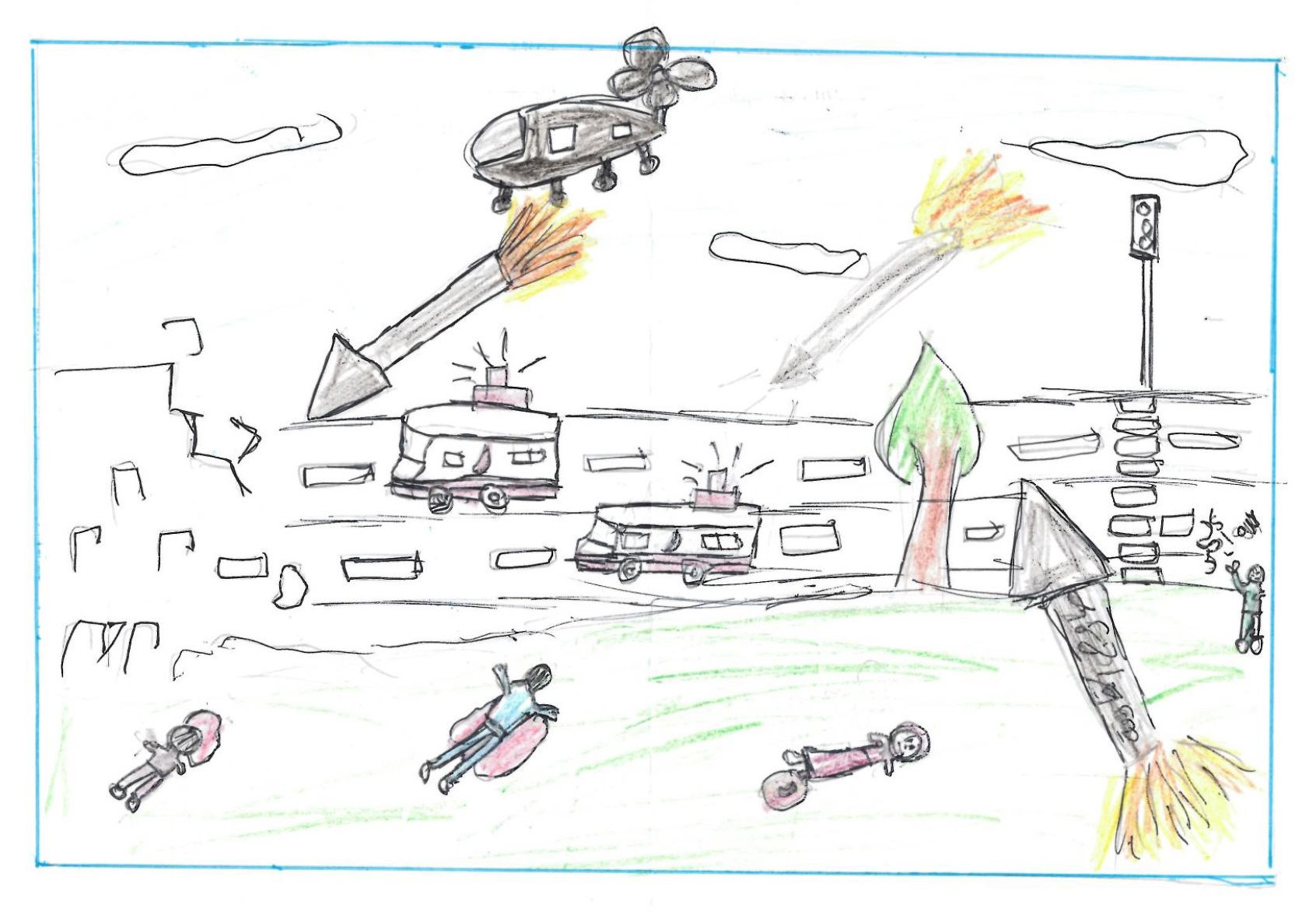
Drawing can also be used as a therapeutic tool. This child’s drawing is from Gaza in 2015. Photo: NRC
Drawing can also be used as a therapeutic tool. This child’s drawing is from Gaza in 2015. Photo: NRC
When school becomes a lifeline
School is the most important investment we can make for displaced children.
“The Convention on the Rights of the Child states that all children have the right to attend school and receive education. But for children who have experienced war and displacement, school is not just a place for learning. It’s just as much about the healing factors: the things that will help them return to a life without trauma,” says Schultz.
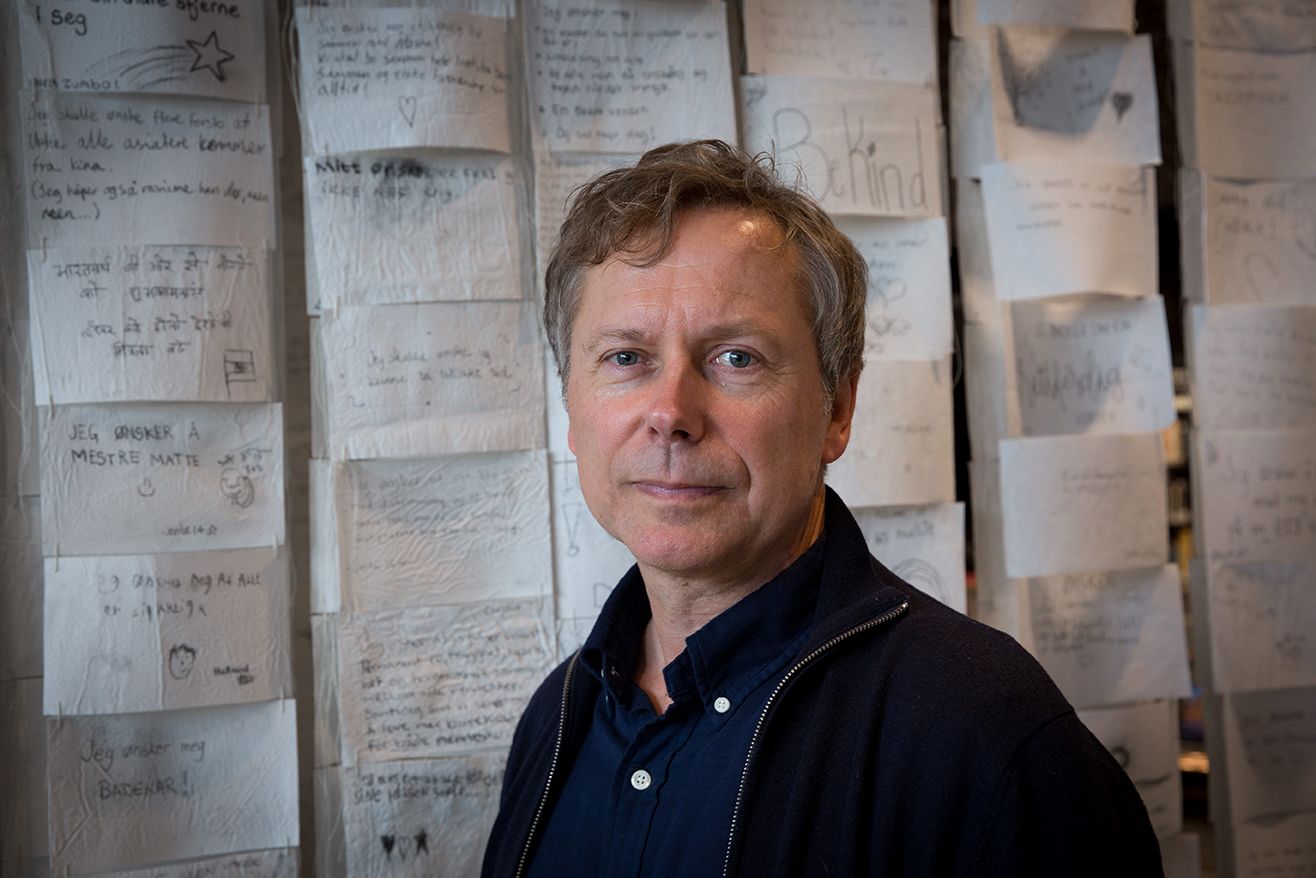
Professor Jon-Håkon Schultz has led the work of developing NRC’s programme designed to help children with stress and trauma. In 2020, some 62,567 children received help through the Better Learning Programme in the Middle East. Photo: Ingebjørg Kårstad/NRC
Professor Jon-Håkon Schultz has led the work of developing NRC’s programme designed to help children with stress and trauma. In 2020, some 62,567 children received help through the Better Learning Programme in the Middle East. Photo: Ingebjørg Kårstad/NRC
A good school helps children get over their trauma. Then, the school becomes a lifeline.
NRC teaches the children various simple relaxation techniques, so that they can learn to regulate overwhelming emotions. Breathing exercises are one such technique.
“There is a lot of research on this. It is as simple as: when you take eight to ten deep breaths, you signal to the brain that it is okay to relax. We explain this to the children,” says Schultz.
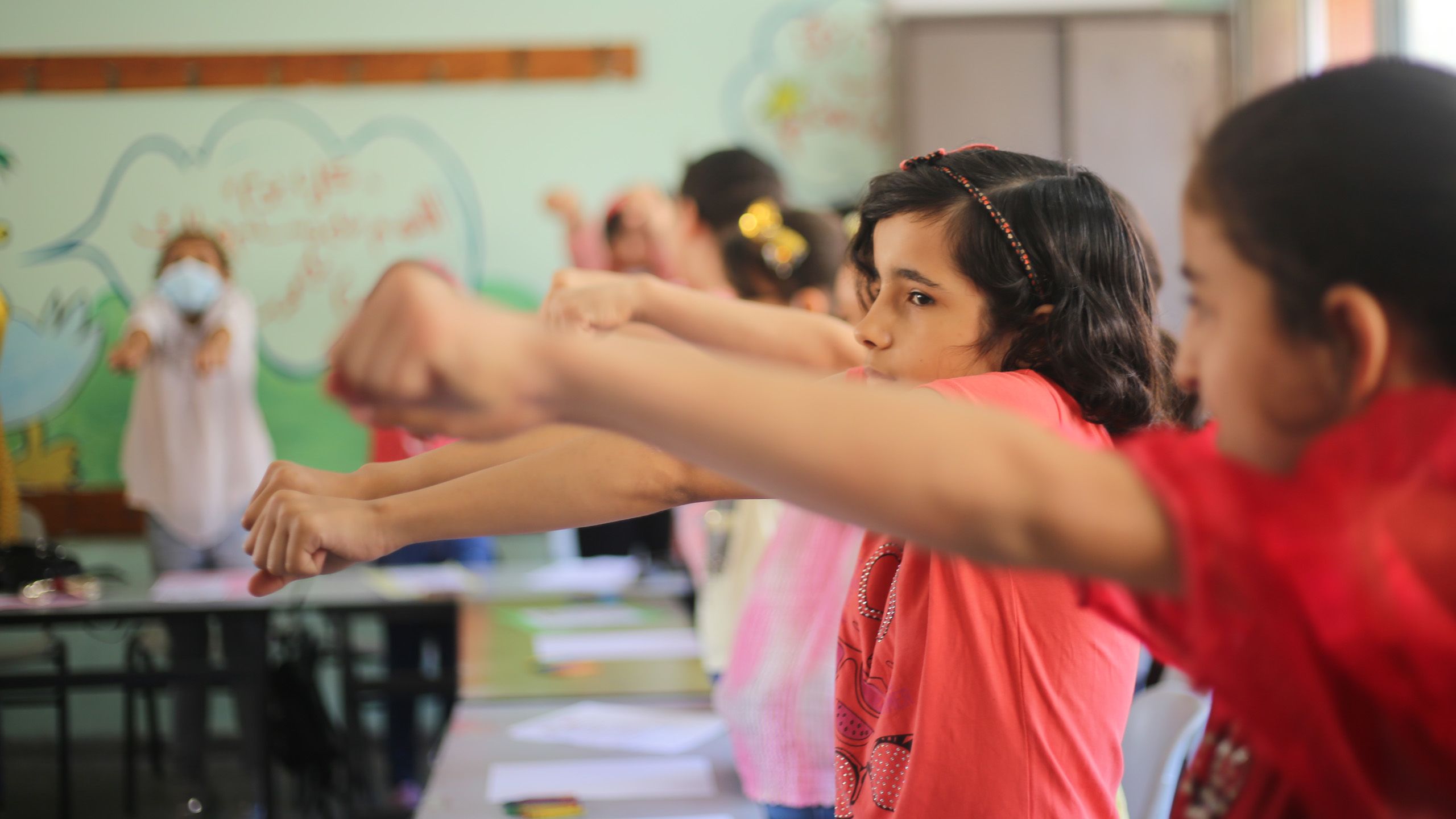
“We say that YOU can do something about this. So when we talk about efficacy and method, the belief and certainty that I can influence my own situation is very important. In addition, it is important to understand that the people around you can also help: your school counsellor, your teacher, your parents. You can talk to them,” Schultz continues.
“And there is another important factor: normalisation. It is quite touching when we see the children in the group ask each other: ‘Do you have nightmares, too?’”
Schultz says that there tends to be good unity in the group:
“They meet four times. But then they know about each other. Often they are in the same class or parallel class, and can talk to each other: ‘How are you doing? Have you had nightmares? Do you do those exercises?’”
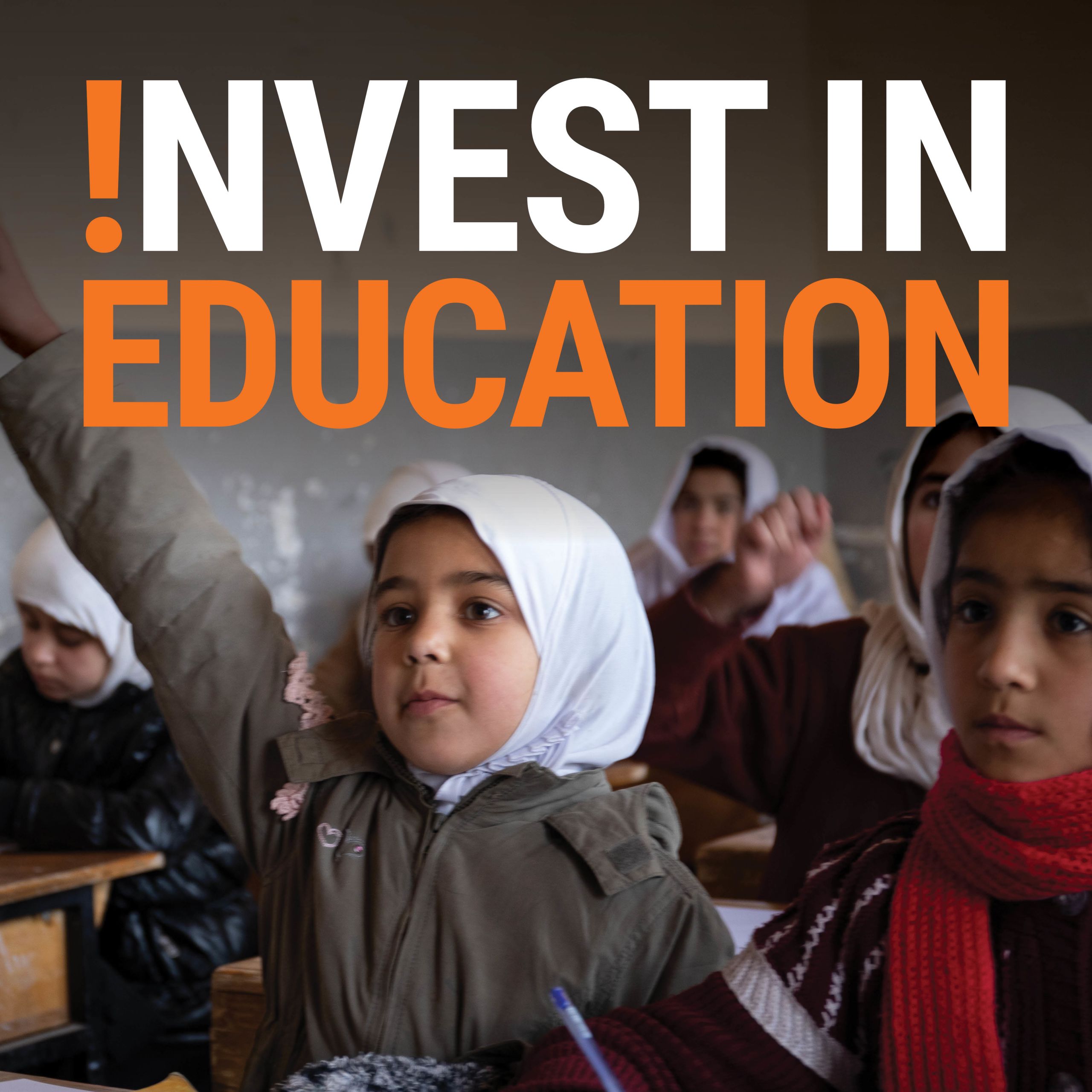
Education is the investment of a lifetime. Invest in a child’s future by becoming a regular donor.
Tablet devices to the rescue
Ezzeldeen, 11, and his family fled from Syria to Jordan in 2012. His father, Mohammed, explains:
“Our hometown Daraa was ravaged by violence, so we went to Jordan to find safety. Life here in Zaatari refugee camp is difficult. I have not found work. The pandemic has made the situation even worse.”
“It is extremely important that children learn to read and write. They need access to knowledge so that no-one can cheat or exploit them,” says Mohammed.
He looks at his son, Ezzeldeen, before continuing:
“My children’s schooling has been chaotic. In such an uncertain life situation, they lose out on education, and it also makes it difficult for them to concentrate. But now they are able to continue their education – thanks to tablet devices from NRC.”
"The Better Learning exercises help me relax. Then I can also di schoolwork."
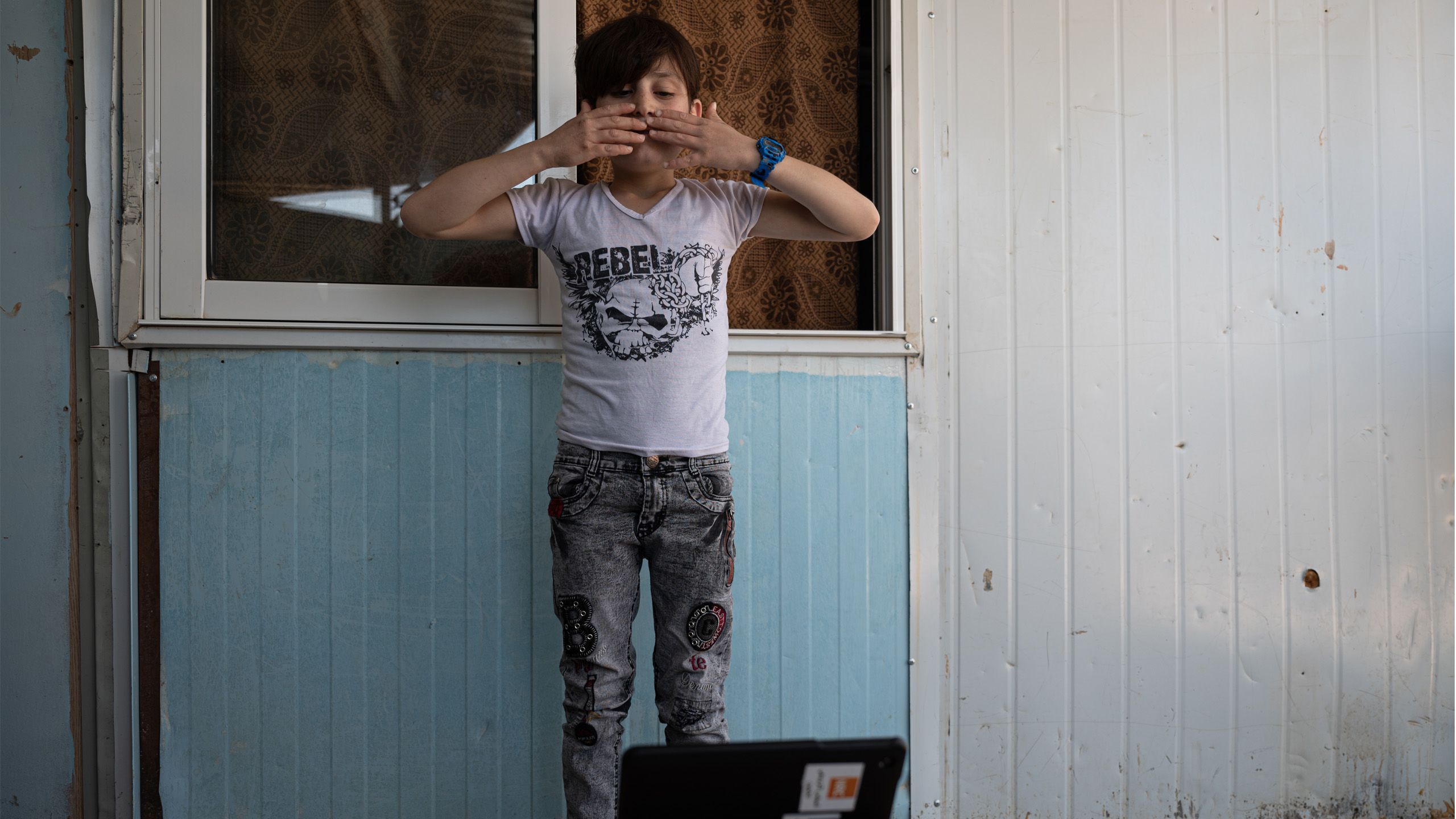
Ezzeldeen is a shy boy. But when he talks about school, he lights up:
"The Better Learning exercises helps me relax. Then I can also do schoolwork," he says.
"I like the online learning lessons, because they help me make up for what I have missed. I have decided to become a paediatrician when I grow up."
The pandemic is causing children even more stress
The Covid-19 pandemic has led to additional stress for children who are already struggling with experiences of war and displacement. Watch NRC's award-winning film "Stressed" – which also features Jon-Håkon Schultz:
Buried with their dreams
The Gaza region has been left in ruins several times, most recently between 10 and 21 May 2021. Then, 260 Palestinians were killed as a result of Israeli bombing. Israeli authorities say 12 civilians were killed by Palestinian rockets in Israel.
More than half of the children in Gaza have post-traumatic nightmares
A study conducted by Jon-Håkon Schultz and his research colleagues in Gaza in 2020 revealed that the children often had nightmares. 56 per cent of the 300 schoolchildren aged 10 to 12 in the study reported recurrent nightmares, with an average frequency of 4.2 nights per week.
Similarly, the 1,093 pupils aged between 6 and 17 who har sought help for nightmares and sleep disorders, reported recurrent traumatic nightmares averaging 4.57 nights per week.
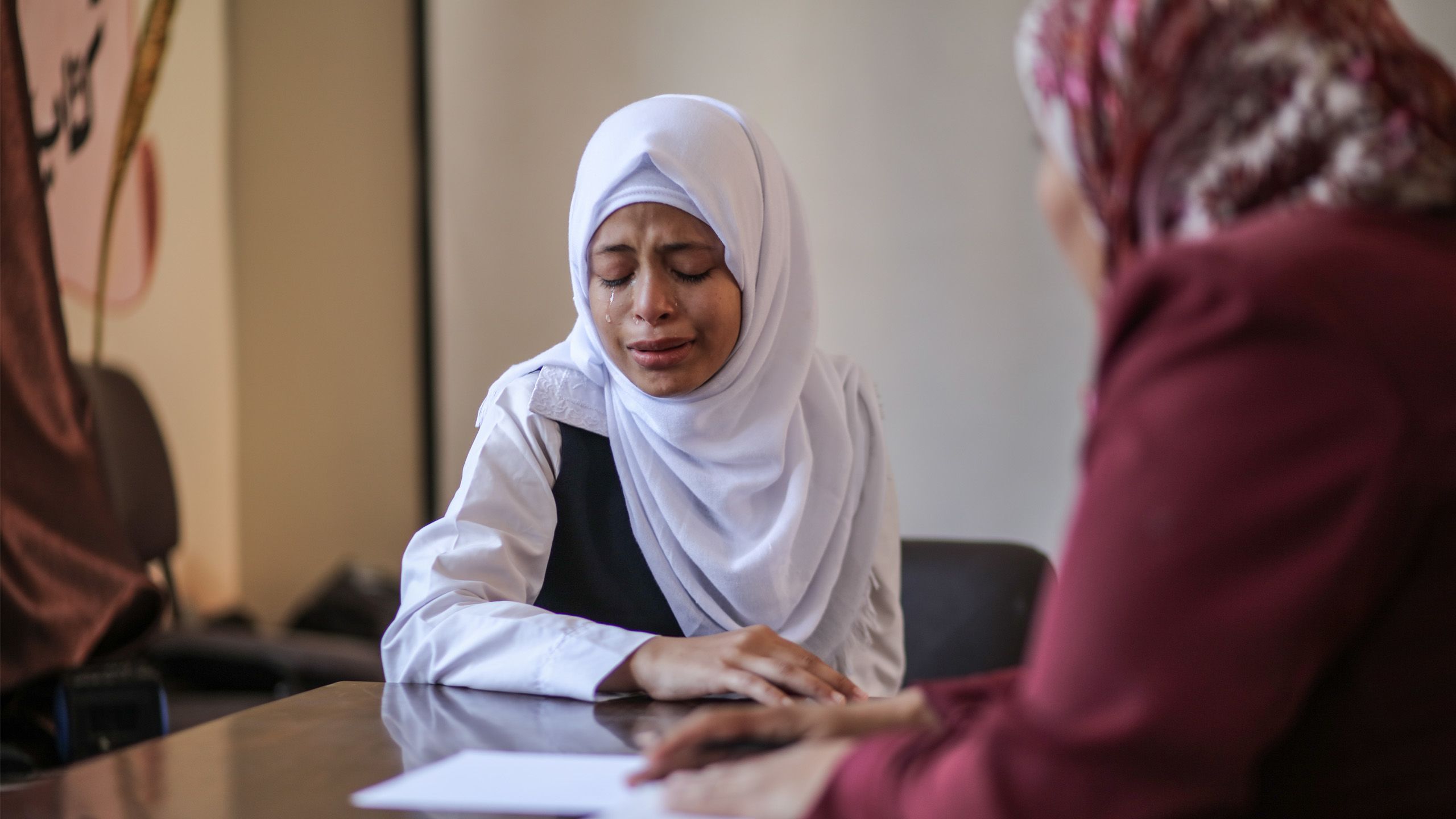
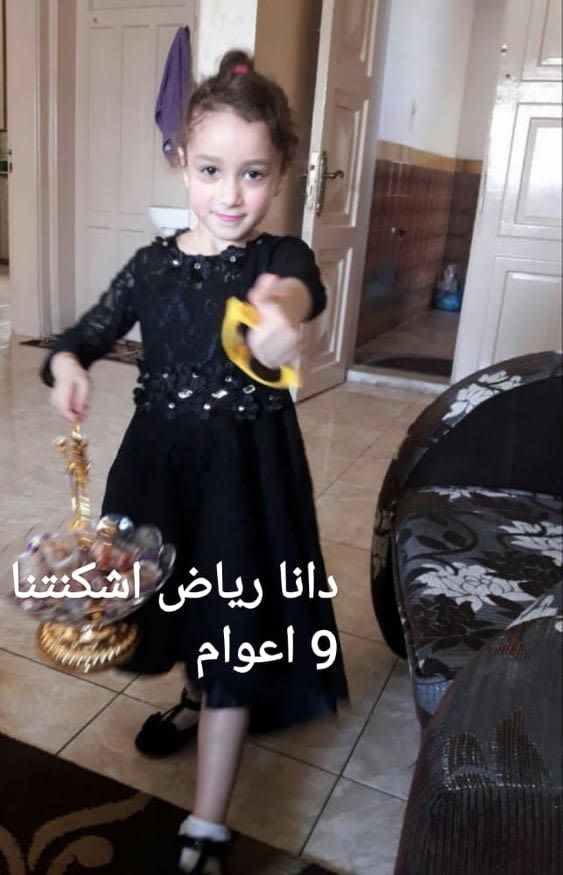
On 16 May this year, there were several airstrikes on Al-Wahda Street in Gaza City. On that day, eight of the children that NRC was working with were killed along with their family members. One of the children was nine-year-old Dana. Photo: The Ishkanta Family/DCIP/NRC
On 16 May this year, there were several airstrikes on Al-Wahda Street in Gaza City. On that day, eight of the children that NRC was working with were killed along with their family members. One of the children was nine-year-old Dana. Photo: The Ishkanta Family/DCIP/NRC
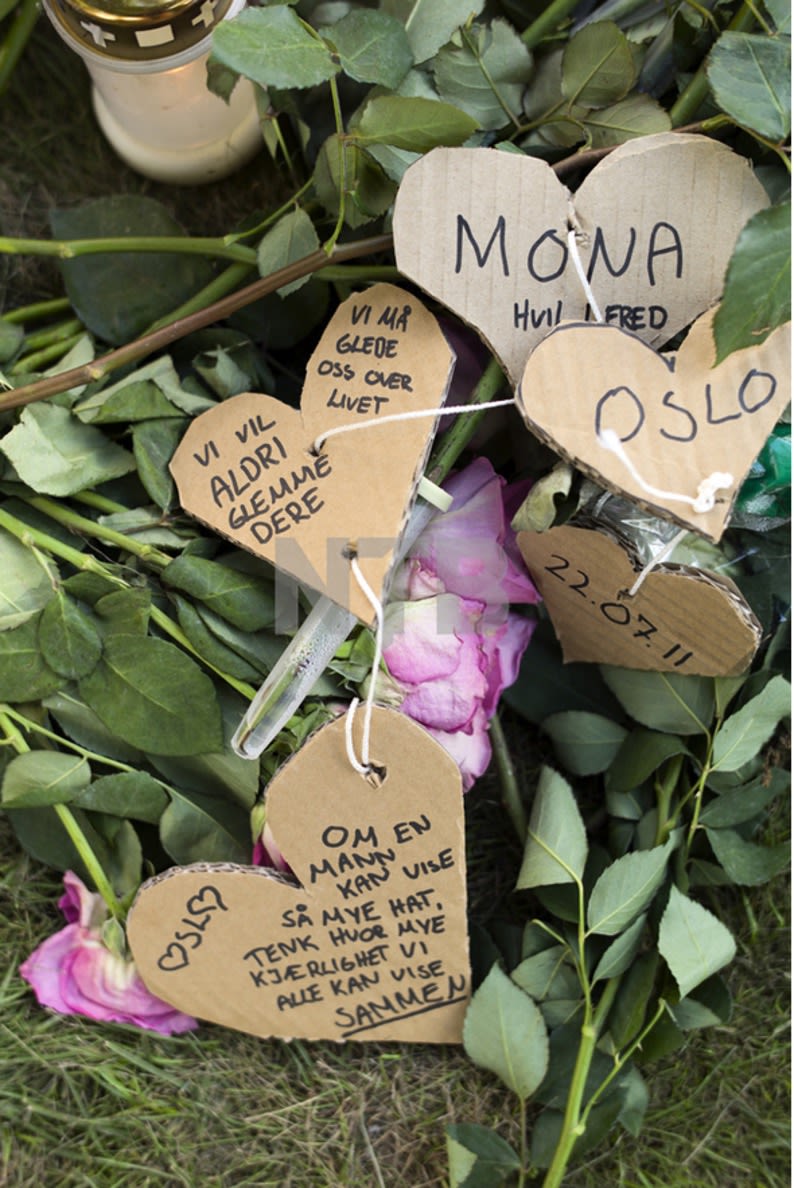
A handwritten card commemorating those killed on 22 July, one year later. The photo was taken at Oslo Cathedral in 2012. Photo: Jamie Parslow/Samfoto/NTB Scanpix
A handwritten card commemorating those killed on 22 July, one year later. The photo was taken at Oslo Cathedral in 2012. Photo: Jamie Parslow/Samfoto/NTB Scanpix
Among those killed in the bloody conflict in the Gaza Strip in May were 75 children – 73 from Gaza and two from Israel.

On 16 May this year, there were several airstrikes on Al-Wahda Street in Gaza City. On that day, eight of the children that NRC was working with were killed along with their family members. One of the children was nine-year-old Dana. Photo: The Ishkanta Family/DCIP/NRC
Eleven of the Palestinian children killed were part of NRC's Better Learning Programme.
"Now they are gone. They were killed along with their families, buried with the dreams and nightmares that haunted them," said NRC Secretary General Jan Egeland.
Education changes lives. You can be a part of that change by becoming a regular donor.
22 July and living in a war
For those of us who live in peace, it is difficult to understand what it is like to experience war. But the terrorist attacks in Norway on 22 July 2011 resembled war. In these attacks, which targeted government buildings in Oslo and a summer youth camp on the island of Utøya, some 77 people were killed – the deadliest incident on Norwegian soil since World War II.
Many of the young people who survived the terrorist attack on Utøya developed sleep issues and experienced nightmares.
“The principles are the same,” says Schultz, who was one of the experts who assisted Norwegian young people after the attack. He explains:
“It was a situation that you as a young person had no control over, and you thought you were going to die. This recurs constantly in dreams. But it is easier to work therapeutically with those who have experienced a single traumatic event than with those who experience multiple traumatic events, such as in Gaza.”

A handwritten card commemorating those killed on 22 July, one year later. The photo was taken at Oslo Cathedral in 2012. Photo: Jamie Parslow/Samfoto/NTB Scanpix
Horrible images return at night
"Children with post-traumatic nightmares wake up and are in alarm mode: stress hormones are pumped around in the blood, the body trembles and breathing becomes laboured and fast. The child screams. They think they are going to die."
Here is a recurring dream experienced by a boy from Gaza. Soldiers shoot at him. They shoot and shoot. He cries for help, but no-one comes. Finally, just before he dies, the ambulance arrives. He is saved! But it is full wild dogs rushing towards him, and all hope is lost.
"The dreams comes because the child has experienced something traumatic. It is this incident that comes back - night after night," says Schultz. He adds:
"It is an overwhelming feeling of hopelessness because no-one is there to help you. You are completely alone.
The Better Learning Programme
NRC’s psychosocial school programme Better Learning Programme (BLP) was established in Palestine in 2012. Today, it is used in 20 countries.
The programme also has a research aspect: Schultz collaborates with researchers from the Murdoch Children’s Research Institute in Australia and the University of Philadelphia in the United States.
BLP is well suited both to displaced people and to their host communities.
It is based on five principles:
- Being able to calm down
- A sense of safety and stability
- The power to change the situation
- Connecting with others
- Re-establishing hope
It is divided into three components:
BLP I: A general, classroom-based psychosocial support approach encompassing all children and young people
BLP II: Instruction and psychosocial support for children in small groups
BLP III: A specialiced, clinical approach to address nightmares, which many children experience as chronic symptoms of post-traumatic stress
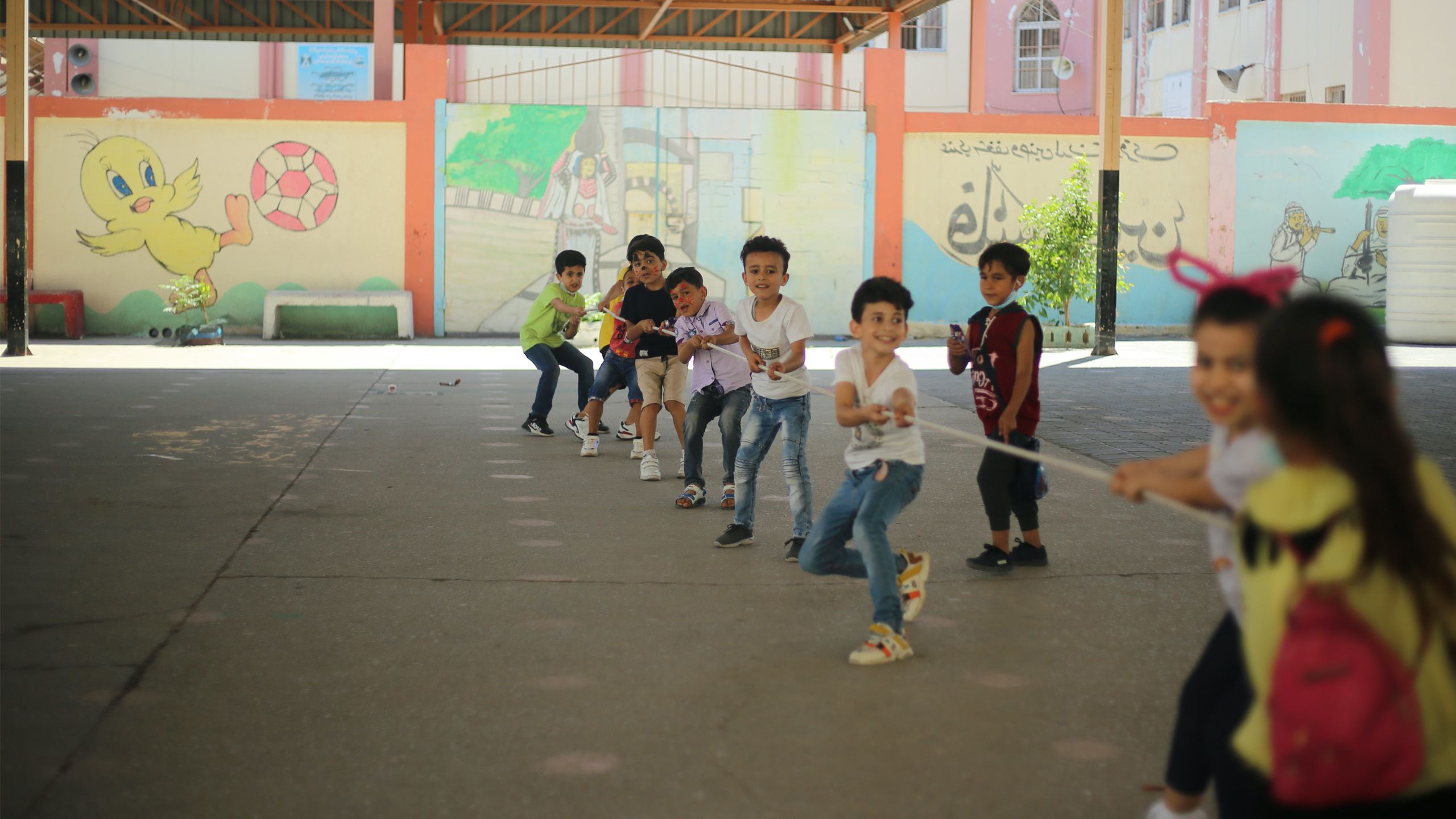
The nightmares of 64 schoolchildren
A study from Gaza examines the nightmares of 64 schoolchildren with an average age of 14. Here are some of the results:
* 90 per cent experience that their lives are threatened in nightmares.
* 24 per cent experience that other people around them also have their lives threatened.
* 16 per cent experience the death of, or serious threats against, family members.
* 10 per cent experience that they themselves are killed during the nightmare.
Most say that their nightmares are about violence (47 per cent), they see dead people (45 per cent) or they are in the middle of a war situation (16 per cent).
Education is the investment of a lifetime. Invest in a child’s future by becoming a regular donor.
Drawings that change lives
“When working with the children’s nightmares, more than 50 per cent of the cases have used a method where the children are challenged to try to ‘change’ the nightmare. This is done by asking them to think of possible adjustments and changes so that the nightmare will be ‘less scary’. Then, they draw the changes in a new drawing. The two drawings are often very similar in the sense that people and objects are generally in about the same place as before – but now in a different form,” says Schultz.
He explains the example above as follows:
The drawing is by a child who dreams he is being attacked by a snake. He is trapped in a circle of dead people.
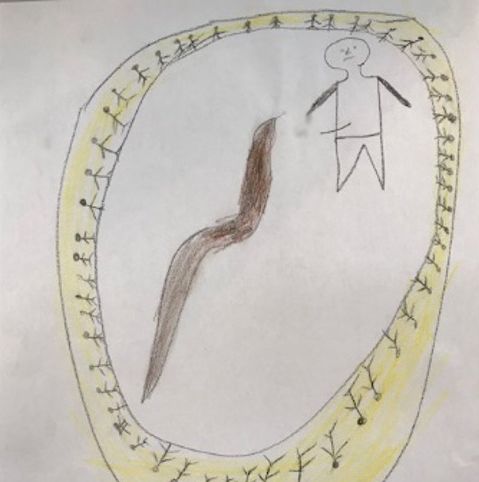
The snake has become a river, while the dead people have been fenced in and cannot get out.
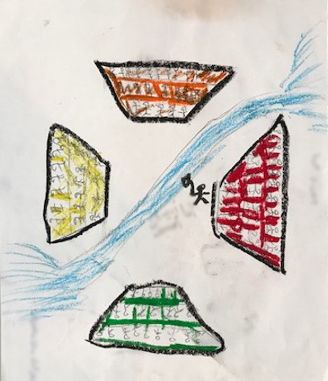
No longer alone
Through discussions in school in the Better Learning Programme, children feel greatly relieved when they discover that their classmates are also struggling with stress and nightmares.
They no longer feel alone.
“Children with post-traumatic nightmares wake up and are in alarm mode: the body trembles, and breathing becomes laboured and fast. The child screams. They think they are going to die.”
For instance, they learn to talk about post-traumatic reactions and how they can control their anxiety through breathing exercises. The results have been astonishingly positive. For children who had an average of five nightmares a week, 70 per cent no longer have nightmares or they have been reduced to just one a week.
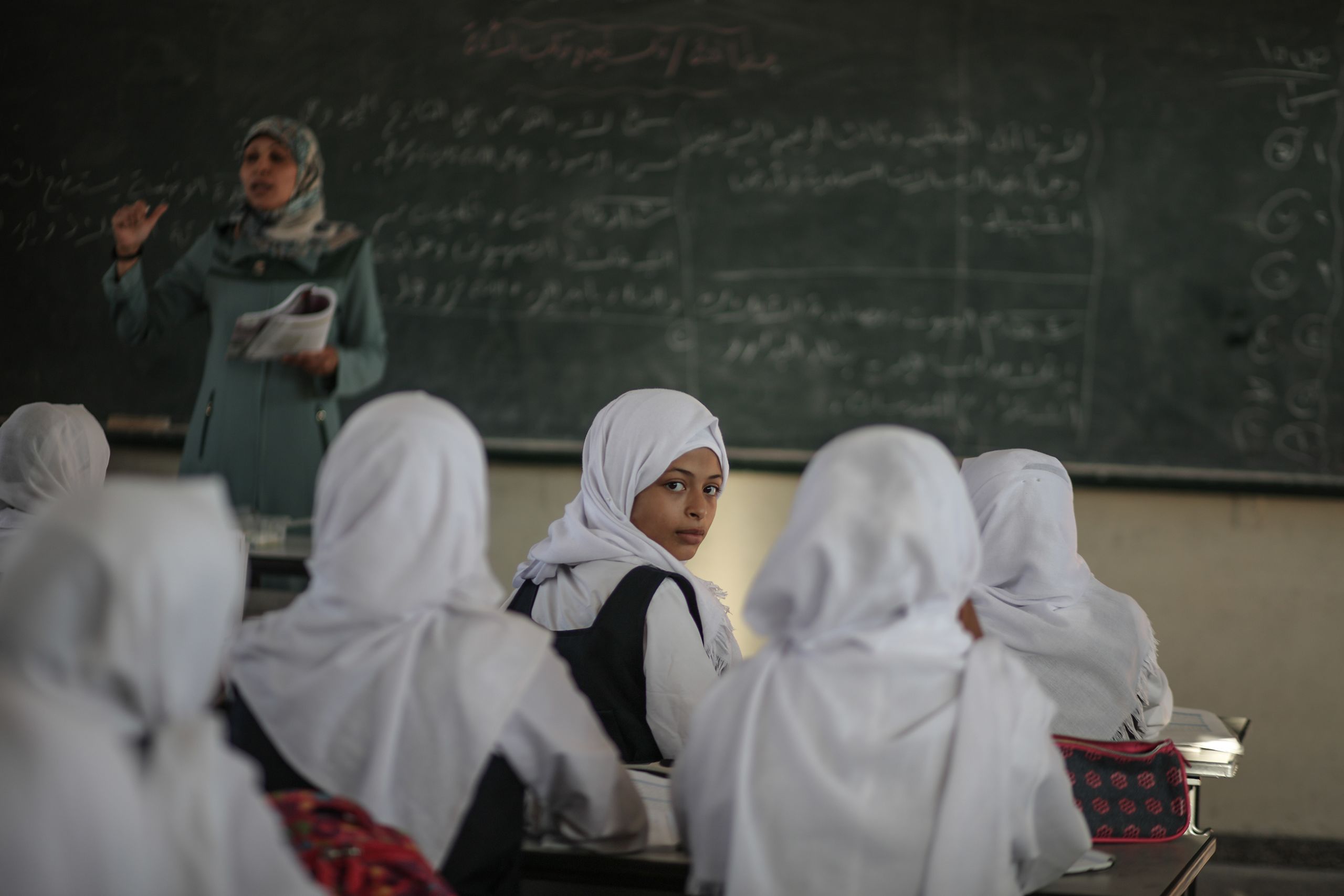
But how long can post-traumatic nightmares last if you don't receive help?
“A long time. One study shows that people in Norway who had experienced World War Two had nightmares regularly for 40 years. For example, everyone who has had a wartime sailor in their family knows that they often had nightmares. The way people processed this in the past was to try to ignore it. You just accepted it and tried to live with it as best you could. And you organised your daily life accordingly. If, for example, a woman became tired of her husband waking up and screaming at night, they would move into separate bedrooms,” says Schultz.
Invest in ME – and the future
Children who have lived with war and conflict have experienced horrific events, which torment them in their daily lives.
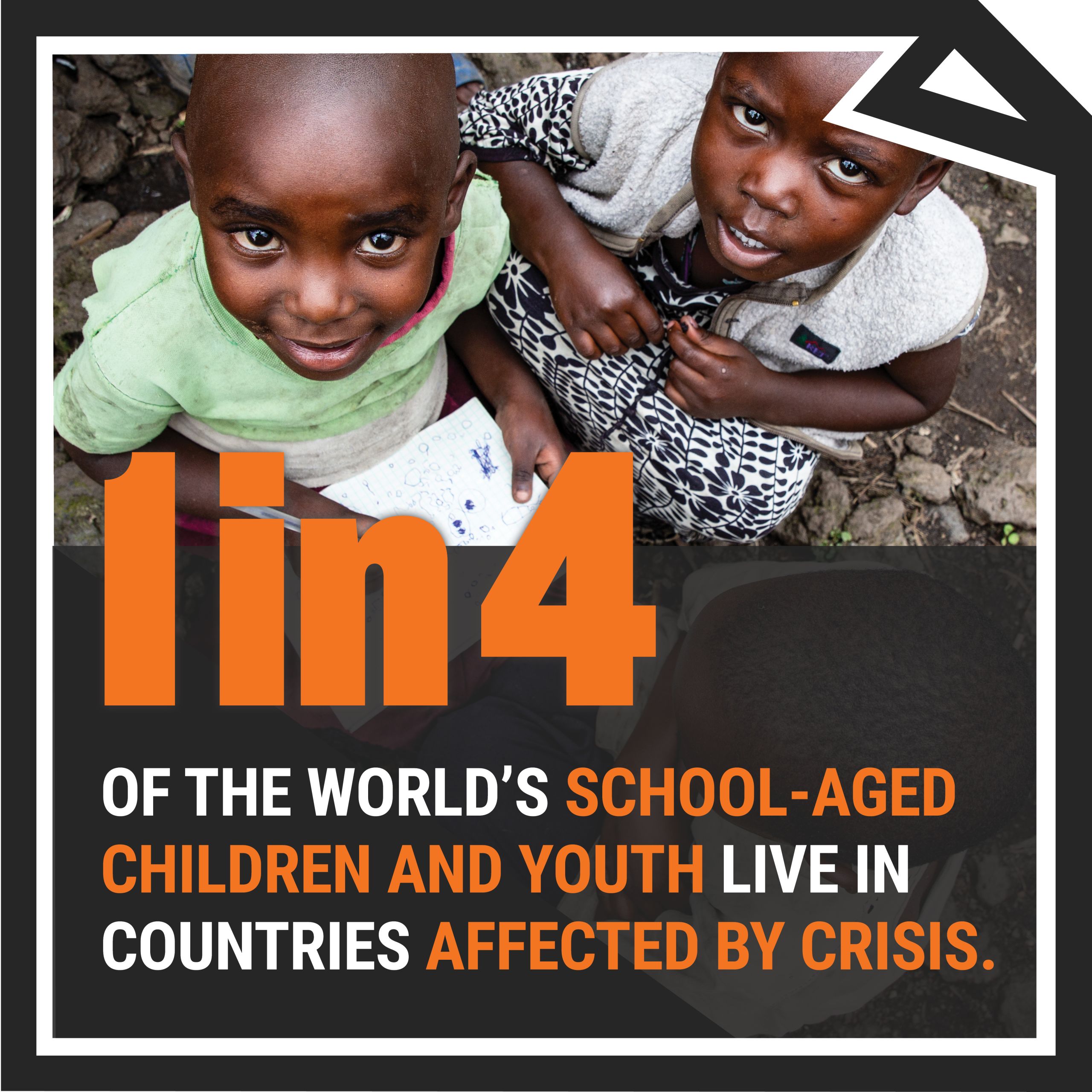
"For some, the trauma will disappear on its own over time. But for many others, that is not the case. These children need help to get rid of the symptoms. If they don't receive help, they may be tormented by trauma throughout thei lives," says Schultz.
He adds:
"My hope is that NRC can ensure that as many children as possible receive and education.
"We know that is helps."
Education changes lives. You can be a part of that change by becoming a regular donor.
